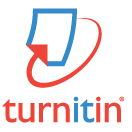Determinant of Obesity Among Women From Low Income Family In RW 05 Area Sub-district Cibubur 2021
DOI:
https://doi.org/10.52023/ijns.v1i2.3514Keywords:
body image, eating pattern, obesity determinant, qualitative study, physical activityAbstract
Obesity is one of the nutrition problems that the prevalence increases continuously. People from low socioeconomic status significantly increase. Likewise, obesity in a woman is more prone than man. This study aims to explore the causes of obesity in adult women who come from middle and lower families. The research was conducted using qualitative principles, which research method in-depth interviews and observations. The primary informants involved ten adult women who have obese nutritional status and the key informants were community leader and family members. Results showed the influence perception of body shape on the intention and willingness to lose weight. Wrong eating patterns are excess food intake and consumption of food and beverages, which lead to obesity along with less exercise and passive activity. Its behavior is affected by individual perceptions, social support, and the environment..
References
Amarasinghe, A. and D’Souza, G (2012) “Individual, Social, Economic, and Environmental Model: A Paradigm Shift for Obesity Prevention” ISRN Public Health, 2012(1), pp. 1–10. doi: 10.5402/2012/571803.
Aziz. A, N. S., et al. (2016) “Perspective on Obesity Problems and Associated Factors to Reduce Weight among Overweight and Obese Housewives: A Qualitative Study” Journal of Womens Health, Issues and Care, 05(06). doi: 10.4172/2325- 9795.1000255.
Baruth, M. et al. (2014) “Perceived Barriers to Exercise and Healthy Eating Among Women from Disadvantaged Neighborhoods: Results from a Focus Groups Assessment” Women and Health, 54(4), pp. 336–353. doi: 10.1080/03630242.2014.896443.
Bayyari, W. et al, (2013) “Dieting behaviours, obesity and predictors of dieting among female college students at Palestinian universities” Eastern Mediterranean health journal = La revue de sante de la Mediterranee orientale al-Majallah al-sihhiyah li- sharq al-mutawassit 19(1), 30–36.
Choi J. (2020) “Impact of Stress Levels on Eating Behaviors among College Students” Nutrients, 12(5), 1241. https://doi.org/10.3390/nu12051241
Church, Timothy and Martin, C K. (2018) “The Obesity Epidemic: A Consequence of Reduced EnergyExpenditure and the Uncoupling of Energy Intake” Obesity (2018) 26: 14 – 16. doi : :10.1002/oby.22072
Curtis, Cate dan Loomans, Cushla (2014) “Friends, family, and their influence on body image dissatisfaction” Women’s Studies Journal, Volume 28 Number 2, December 2014: 39-56.
Gilbert et al. (2019) “A Qualitative Study Identifying Barriers and Facilitators of Physical Activity in Rural Communities”. Journal of Environmental and Public Health, vol. 2019, Article ID 7298692, 7 pages, 2019. https://doi.org/10.1155/2019/7298692
Goettler, A. Grosse, A. Sonntag, D. (2017) “Productivity loss due to overweight and obesity: a systematic review of indirect costs” BMJ 2017; 7(10): e014632. doi: 10.1136/bmjopen-2016-014632
Guilherme et al., (2008) Adipocyte dysfunctions linking obesity to insulin resistance and type 2 diabetes’ Nat Rev Mol Cell Biol. 2008 May; 9(5): 367–377. doi: 10.1038/nrm2391
Haynes et al. (2018) “A systematic review of the relationship between weight status perceptions and weight loss attempts, strategies, behaviours and outcomes” Obesity reviews : an official journal of the International Association for the Study of Obesity, 19(3), 347–363. https://doi.org/10.1111/obr.12634
Kemenkes RI. (2018) Riset Kesehatan Dasar (Riskesdas) 2018. Lembaga Penerbitan dan Pengembangan Kesehatan Kementerian Kesehatan Republik Indonesia (Kemenkes RI), Jakarta.
Klump K. L. (2013) Puberty as a critical risk period for eating disorders: a review of human and animal studies. Hormones and behavior, 64(2), 399–410. https://doi.org/10.1016/j.yhbeh.2013.02.019
Pantelis D. (2018) The role of emotions in eating behavior and impact on obesity and weight management. Adv Obes Weight Manag Control. 2018;8(3):175-176 DOI: 10.15406/aowmc.2018.08.00237
Petersen, T.L et al. (2020) Association between parent and child physical activity: a systematic review. Int J Behav Nutr Phys Act 17, 67 https://doi.org/10.1186/s12966-020-00966-z
Pinto KA, et al. (2018) “Gender, time use and overweight and obesity in adults: Results of the Brazilian Longitudinal Study of Adult Health (ELSA-Brasil)” PLOS ONE 13(8):
e0198380. https://doi.org/10.1371/journal.pone.019838
Rahanis dkk. (2014) “Analisis Upaya-Upaya Penurunan Berat Badan Pada Wanita Usia Produktif Di Wilayah Kerja Puskesmas Wawonasa Kecamatan Singkil Manado” Jurnal Kedokteran Komunitas dan Tropik. Vol 2 No 2: 63-70
Vizcarra et al., (2019) “Weight Matters—Factors Influencing Eating Behaviors of Vulnerable Women” Nutrients. 2019 Aug; 11(8): 1809. doi: 10.3390/nu11081809
World Health Organization. (2018) Obesity and Overweight. Available from : https://www.who.int/news-room/fact-sheets/detail/obesity-and-overweight [Retrieved September 2020]
Downloads
Published
How to Cite
Issue
Section
License
IJNS: Indonesian Journal of Nutritional Sciences is licensed under a Creative Commons Attribution-Share Alike 4.0 International License






